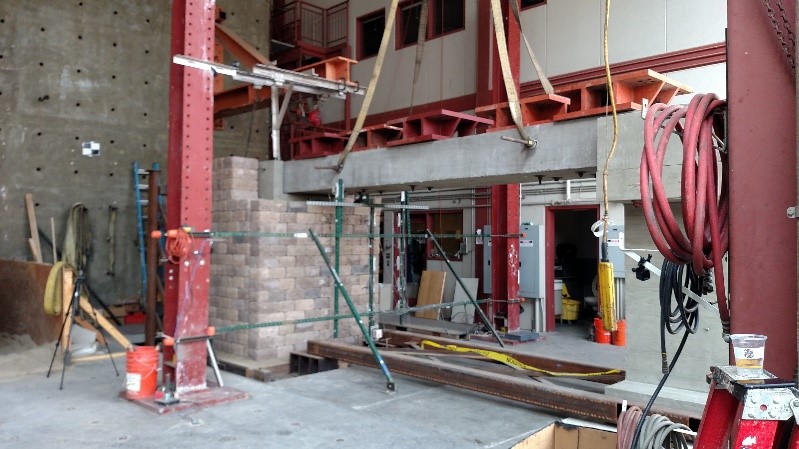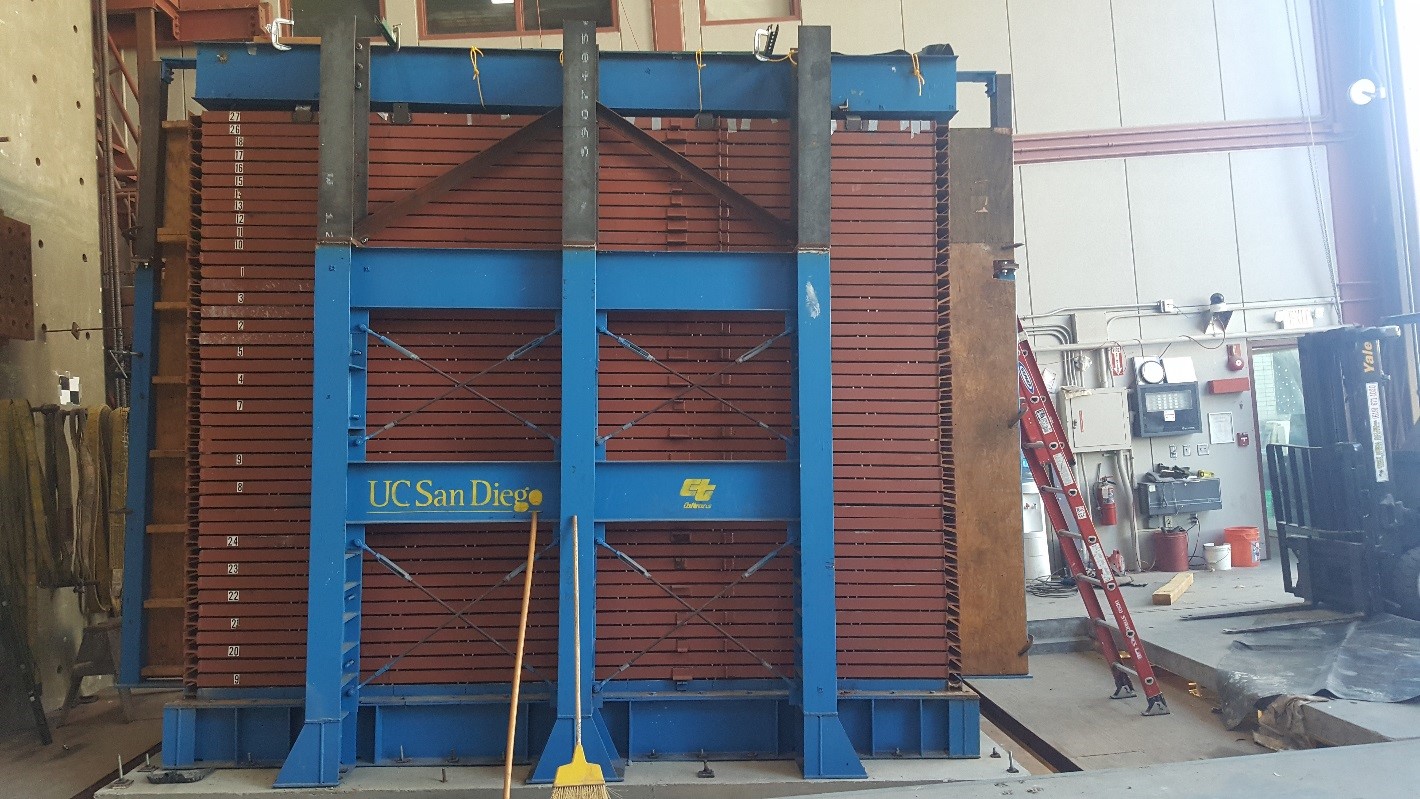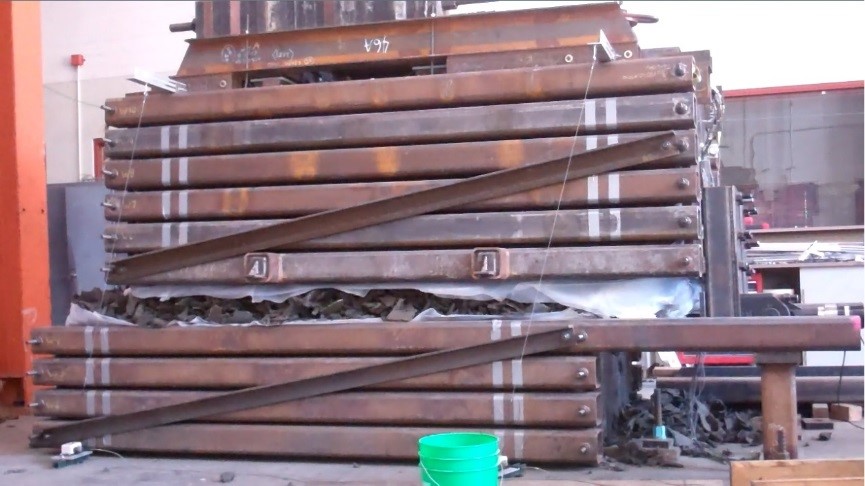Geotechnical Laboratory
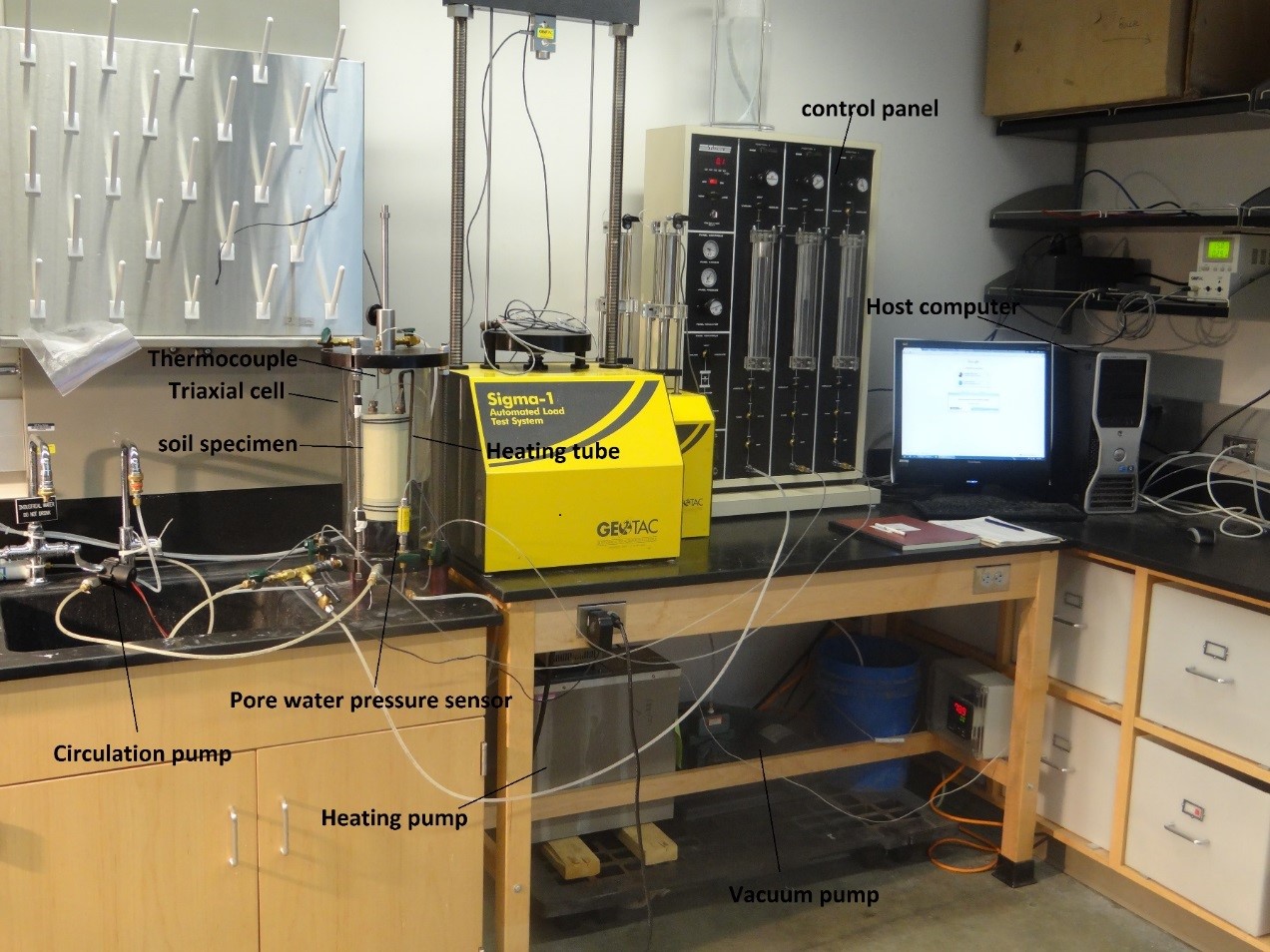 The UCSD geotechnical laboratory is fully equipped for standard soil classification and characterization. Equipment includes standard index test, consolidation, hydraulic conductivity, direct shear, and triaxial shear equipment. The general geotechnical laboratory also includes a constant rate-of-strain (CRS) consolidometer, several incremental-loading oedometers, a slurry consolidometer, and permeameters with double-ring bases for hydraulic conductivity testing, and a bank of pressure panels for control of various types of tests. The geotechnical laboratory includes two displacement-control uniaxial loading frames with capacities of 4 and 10 kN. The laboratory contains 2 conventional triaxial cells that can be used to measure the shear strength of saturated and unsaturated soils under different confining pressure ranges with specimen diameters ranging from 35 to 150 mm, and several homemade and Trautwein pressure-volume controllers (flow pumps) are available for stress path testing or hydraulic conductivity measurements.
The UCSD geotechnical laboratory is fully equipped for standard soil classification and characterization. Equipment includes standard index test, consolidation, hydraulic conductivity, direct shear, and triaxial shear equipment. The general geotechnical laboratory also includes a constant rate-of-strain (CRS) consolidometer, several incremental-loading oedometers, a slurry consolidometer, and permeameters with double-ring bases for hydraulic conductivity testing, and a bank of pressure panels for control of various types of tests. The geotechnical laboratory includes two displacement-control uniaxial loading frames with capacities of 4 and 10 kN. The laboratory contains 2 conventional triaxial cells that can be used to measure the shear strength of saturated and unsaturated soils under different confining pressure ranges with specimen diameters ranging from 35 to 150 mm, and several homemade and Trautwein pressure-volume controllers (flow pumps) are available for stress path testing or hydraulic conductivity measurements.
The geotechnical laboratory is equipped with conventional unsaturated soils testing equipment for measurement of the soil water retention curve and hydraulic conductivity function (rigid and flexible wall pressure chamber outflow devices and hanging column devices). An NGI simple shear device with a wire-reinforced membrane has been retrofitted to perform cyclic simple shear testing on unsaturated soils in undrained conditions. A large direct shear box is available for testing of geosynthetic interfaces, and a pullout device with temperature control is available for characterizing the pullout strength of geosynthetic or metallic reinforcements from geomaterials under different stresses under both load- and displacement-control conditions.
The laboratory also includes specialized devices that were developed to characterize the thermo-hydro-mechanical properties of soils. Three thermal triaxial cells are available for saturated and unsaturated soils under both low and high suction magnitudes, where the state of stress can be controlled with pressure control panels or stepper-motor driven flow pumps. The first cell is used to test unsaturated soils under low suction magnitudes using the axis translation technique, and tracks specimen deformations with non-contact proximitors. The second cell is used to test unsaturated soils under high suction magnitudes using the vapor flow technique and tracks specimen deformations with digital image analysis from a pair of Nikon D7500 DSLR cameras. The third cell from GDS can be used to test unsaturated soils under both low and high suctions and contains bender elements for measurement of both compression and shear wave velocities. This cell tracks specimen deformations using linearly variable differential transformers (LVDTs) mounted on the specimen. This cell can accommodate cell pressures of up to 3.5 MPa and temperatures of 90 °C.
National Instruments data acquisition devices with Labview software are available to monitor signals from a range of potentiometers, load cells, strain gages, pore water pressure sensors, tensiometers, bender elements, and thermocouples available in the laboratory. Several dielectric sensors and dataloggers for measuring temperature and volumetric water content are also available. Single and dual thermal needle devices are available for measuring the thermal conductivity and specific heat capacity.
Geotechnical Centrifuge Laboratory
The UCSD geotechnical engineering facilities also include a 50 g-ton geotechnical centrifuge used for research, industry design, and instructional purposes. The swinging-basket type centrifuge platform can support a container with a maximum payload mass of 500 kg and footprint of 0.6 m by 0.7 m. This platform can accommodate boxes with a height of 0.6 m, with a maximum headroom of 0.75 m for offset actuators and loading devices. The centrifuge has been recently upgraded, with a new control room, power supply, a data acquisition system. The centrifuge was recently equipped with a servo-hydraulic shaking table and high-pressure pump for evaluation of the seismic performance of level ground, slopes, and retaining structures. A laminar container has been fabricated for use with the shaking table. Three cylindrical containers with integrated load frames are available that are suitable for testing thermal drains, energy piles, and offshore foundation structures in soft clay layers or compacted soil layers. One of these containers can also be used as a centrifuge permeameter for evaluation of the hydraulic properties of unsaturated soils. The data acquisition system for the 50 g-ton centrifuge was recently upgraded and includes a suite of NI CompaqDaq and CompaqRio chasses with modules suitable for signal conditioning of LVDTs, strain-gauge-type sensors (load cells, pressure sensors), accelerometers, capacitance-type differential pressure transducers, thermocouples, and cameras for image analysis. Motor control capabilities are also possible to operate brushed electric servomotors, solenoids, and electronic flow valves. Camera acquisition software can be used to track deformation of points or planes. The centrifuge includes a hydraulic rotary union with 2 lines to supply hydraulic fluid at pressures up to 200 MPa, and 2 lines to supply air or water under pressures up to 1 MPa. The laboratory has devices for mixing large batches of clay slurry and for consolidating clay specimens outside of the centrifuge.
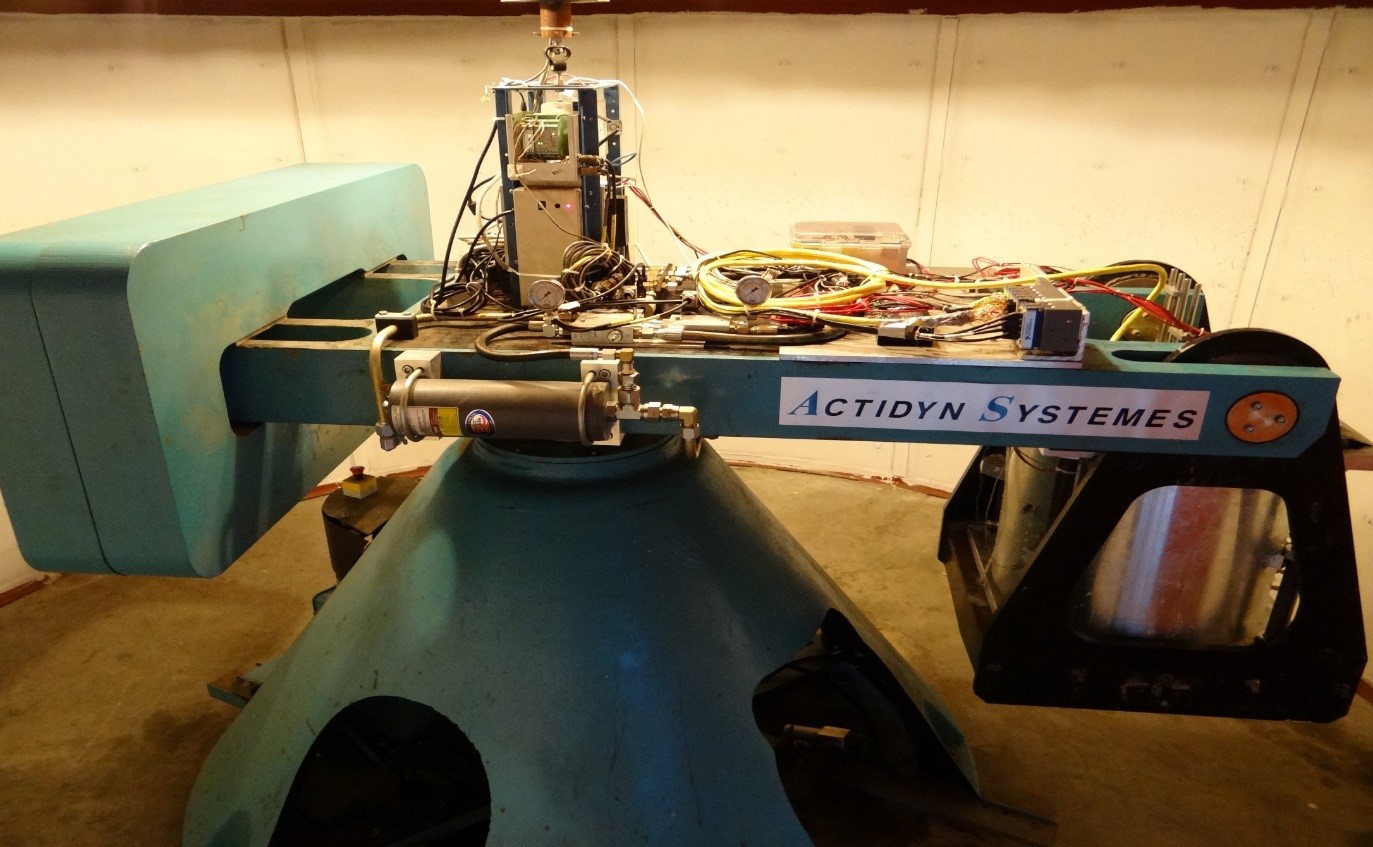
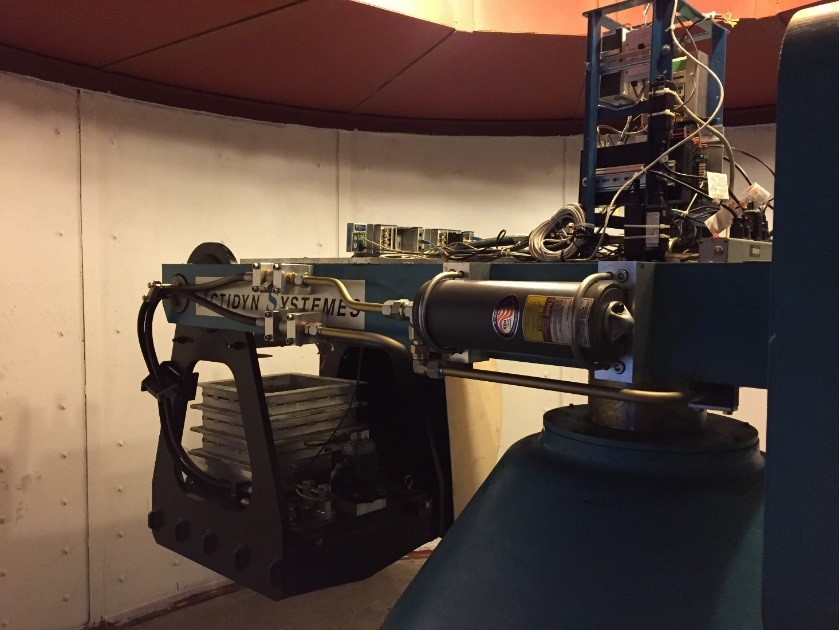
Geotechnical Engineering at the Englekirk Structural Engineering Center (ESEC)
ESEC is an off-campus research site located 10 miles from the UCSD campus that houses the NHERI Large High Performance Outdoor Shaking Table. The facility includes several containers that may be used for testing the dynamic response of soil layers and soil-structure interaction. A large laminar container is available for testing the earthquake response of soil layers with or without buried structures. This container has an inside length of 6.7 m (22 ft), width of 3 m (9.6 ft) and height of 4.7 m (15.2 ft). A large rigid container is available for testing plane strain-type structures like mechanically-stabilized earth walls. This rigid container has inside length of 10 m, width of 4 m, and height of 7.5 m.
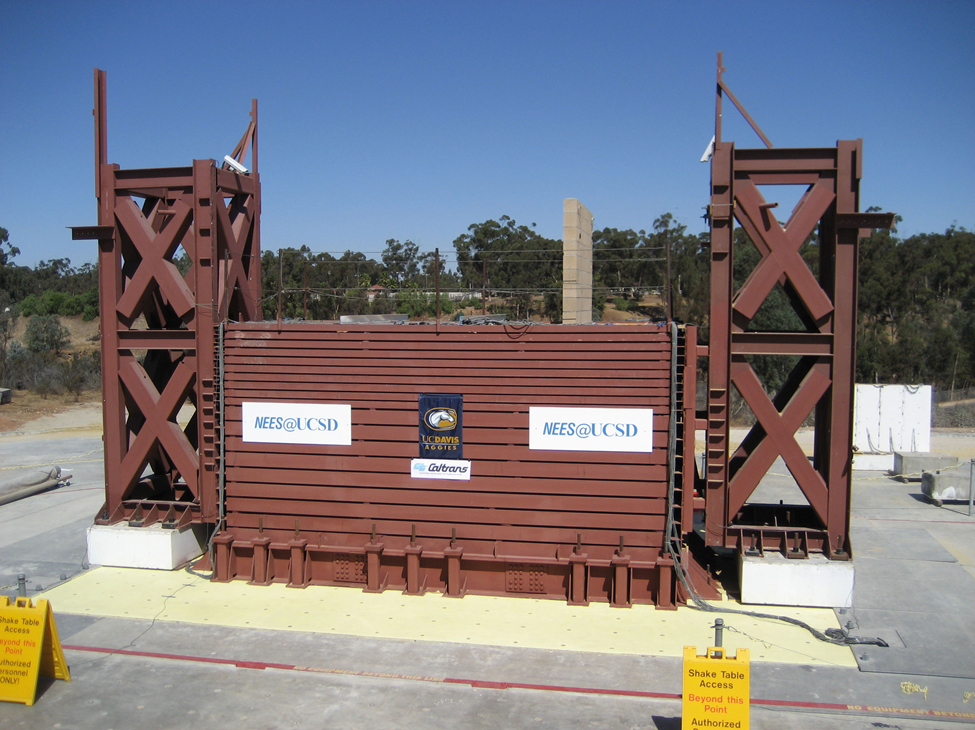
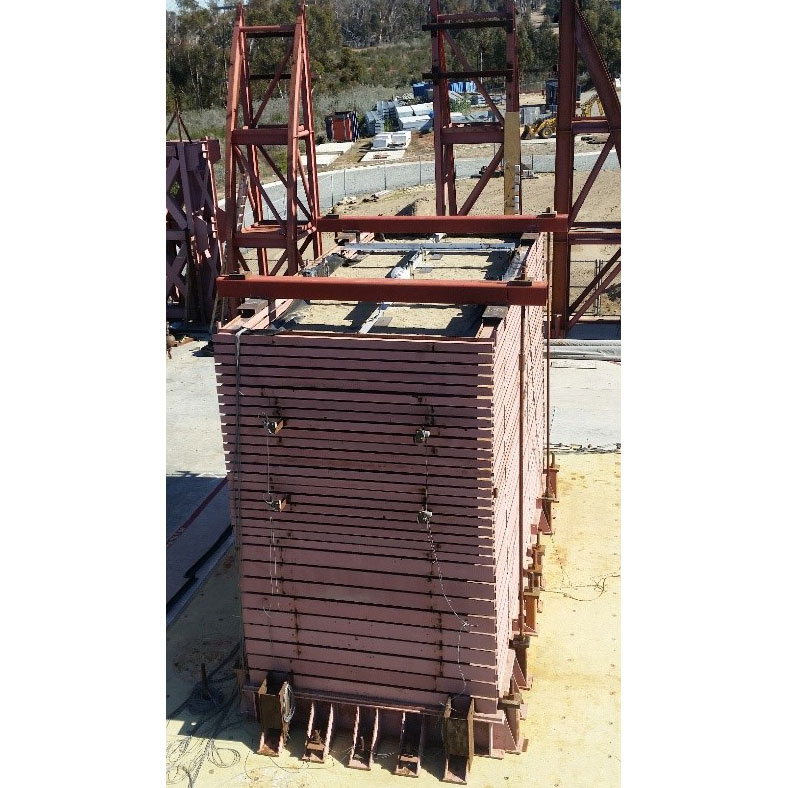


ESEC includes two refillable soil pits having a depth of 30 ft with plan dimensions of 70 ft by 70 ft at the top and 30 ft by 30 ft at the bottom that enable controlled testing of deep foundations or other geostructures. Soil can be placed in controlled conditions and removed after testing. A moveable reaction wall with actuators allows for full-scale testing of systems such as bridge abutments and pile foundations, capable of horizontally loading abutments with 500 to 1000 kips force and up to 4 feet of displacement at heights of up to 15 feet. The laminar soil shear box can be placed next to the reaction wall for representing in-situ soil conditions for soil-structure interaction experiments.
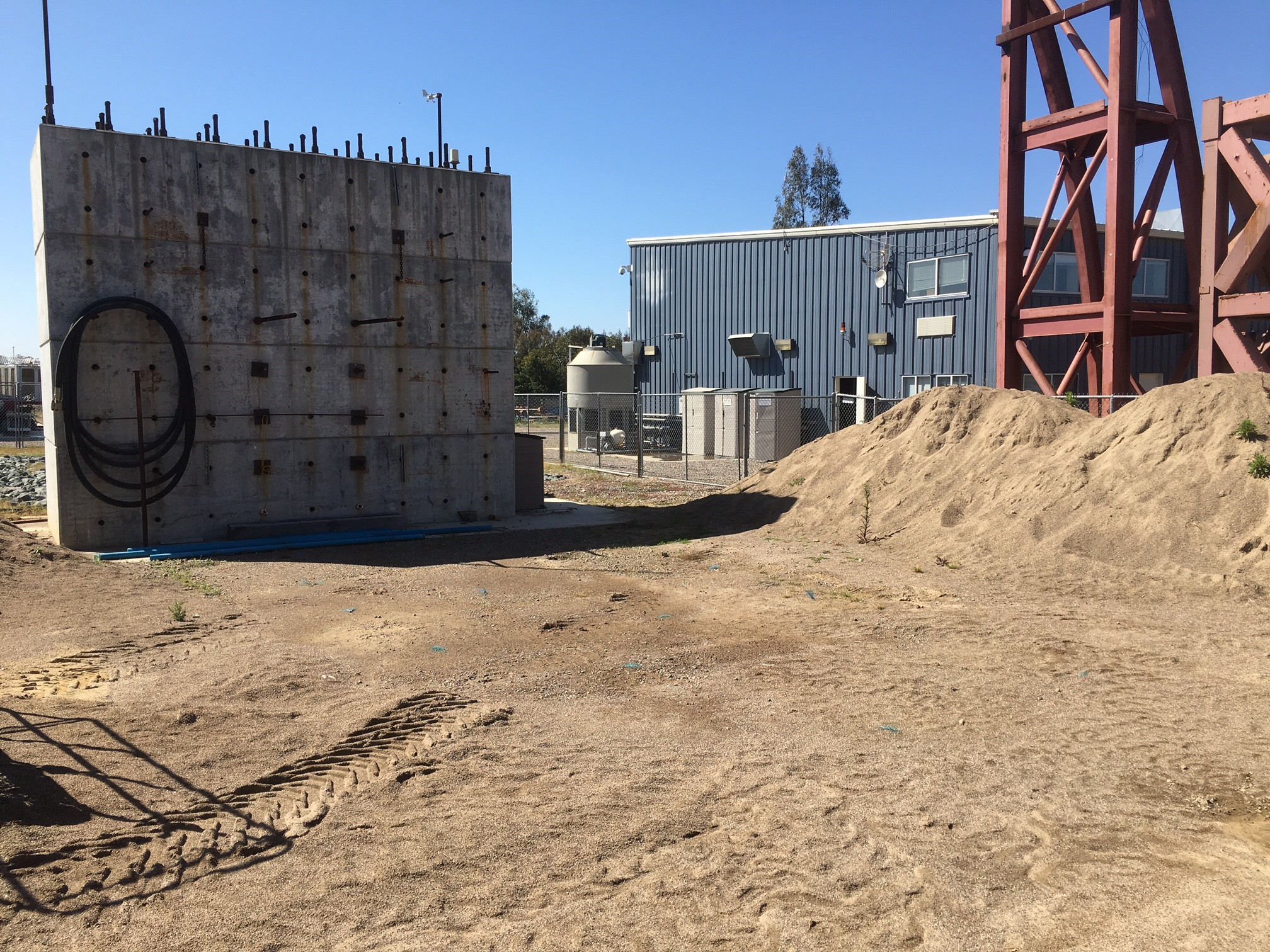
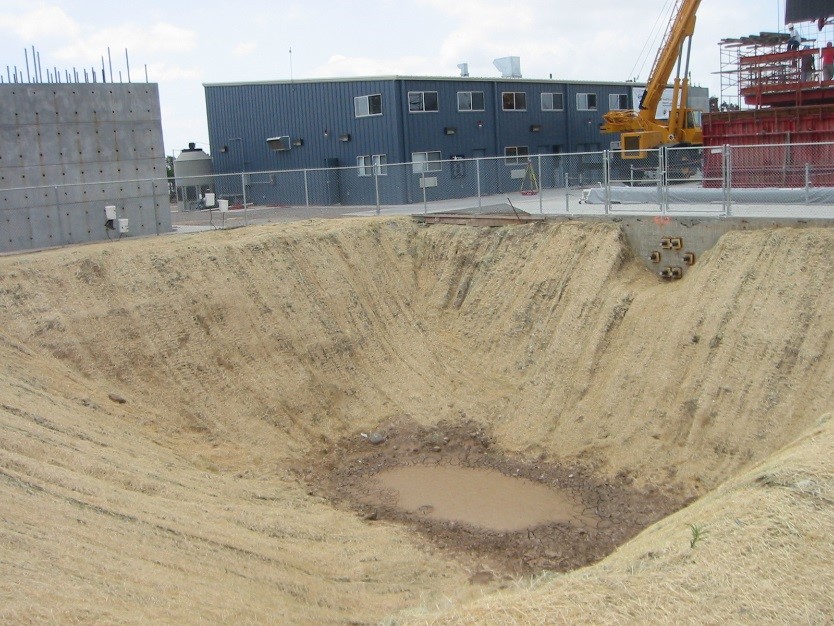

ESEC also includes an NSF-supported soil-borehole thermal energy storage system which collects heat from solar thermal panels and transfers it to the ground for storage. This system includes two horizontal heat storage systems that can be reconfigured for different tests as well as a vertical heat storage system including 13 closely-spaced boreholes.
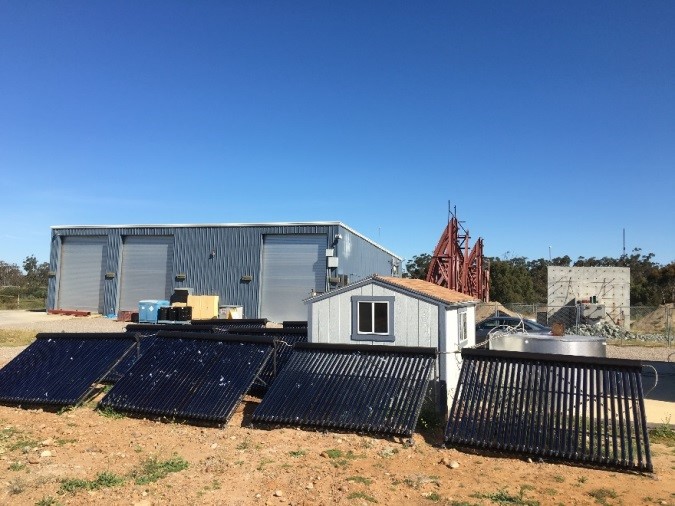
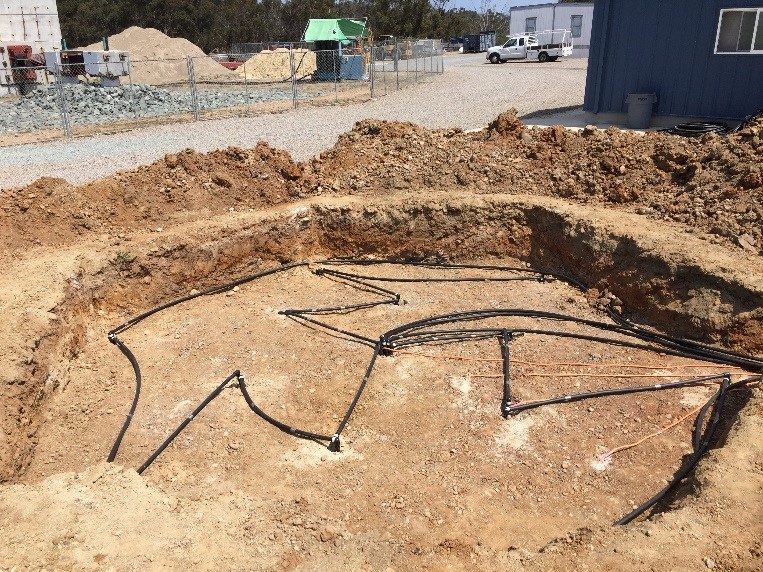
Geotechnical Engineering in the Powell Laboratory
Several geotechnical projects have been performed on the indoor shaking table at the University of California, San Diego (UCSD) Powell Structural Laboratory, which has a length of 5 m in the direction of motion and a width of 3 m. The table has a maximum payload capacity of 356 kN, which is sufficient to test heavy earthen structures. The table slides horizontally in one direction on two stationary shafts and is driven by a servo-hydraulic actuator with a static capacity of 490 kN, dynamic capacity of 405 kN, and maximum stroke of ± 150 mm. The table can replicate realistic earthquake motions and was recently refurbished and calibrated. The table can be used together with a laminar container for testing soil layers, or a frame to test structures like mechanically-stabilized bridge abutments. The indoor shaking table facility has more than 128 channels of data acquisition, several accelerometers suitable for embedment in soils, earth pressure cells, and linear potentiometers. The Powell laboratory also includes a large (1m×3m×2m) direct/simple shear machine for geomaterials with large particle size.

